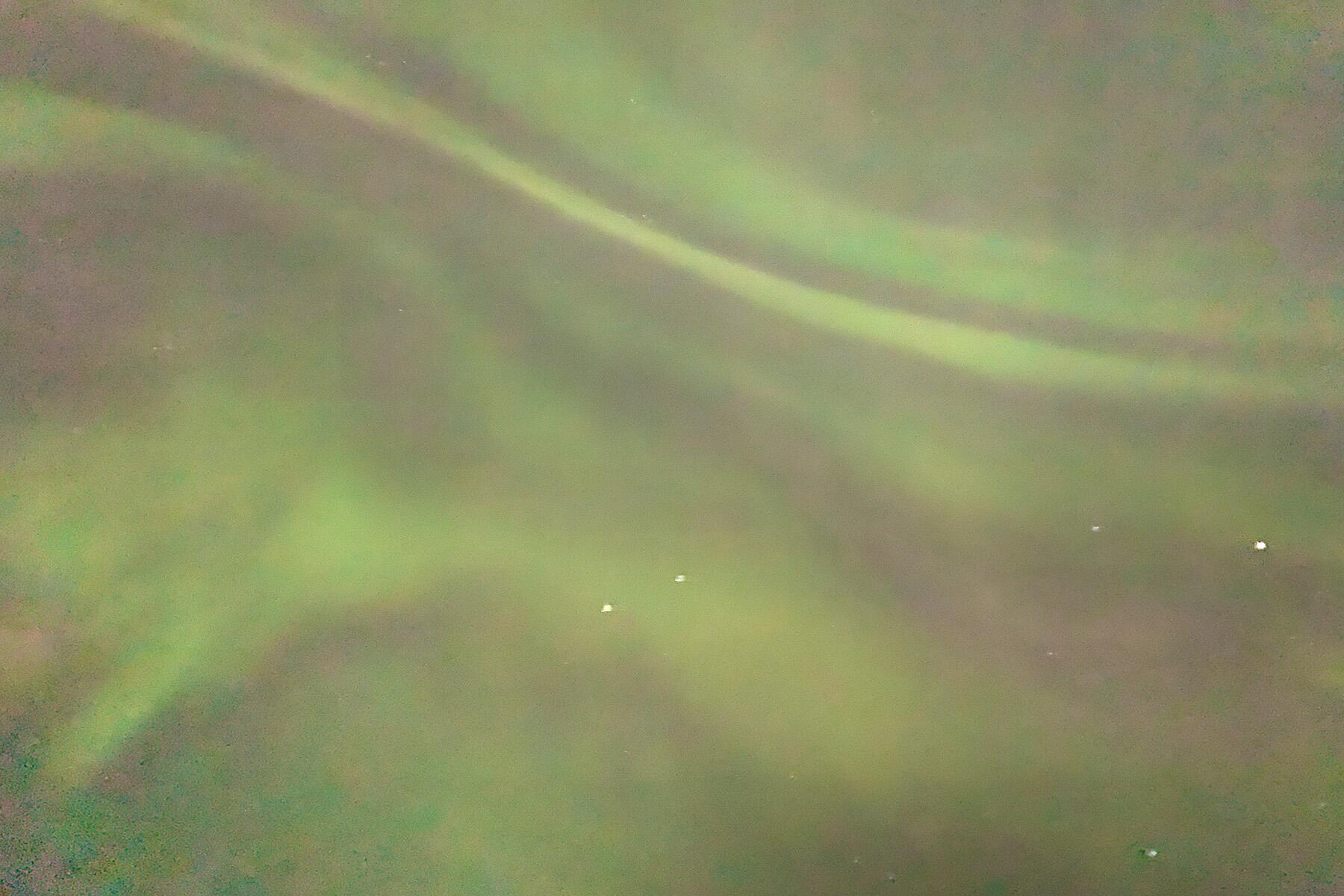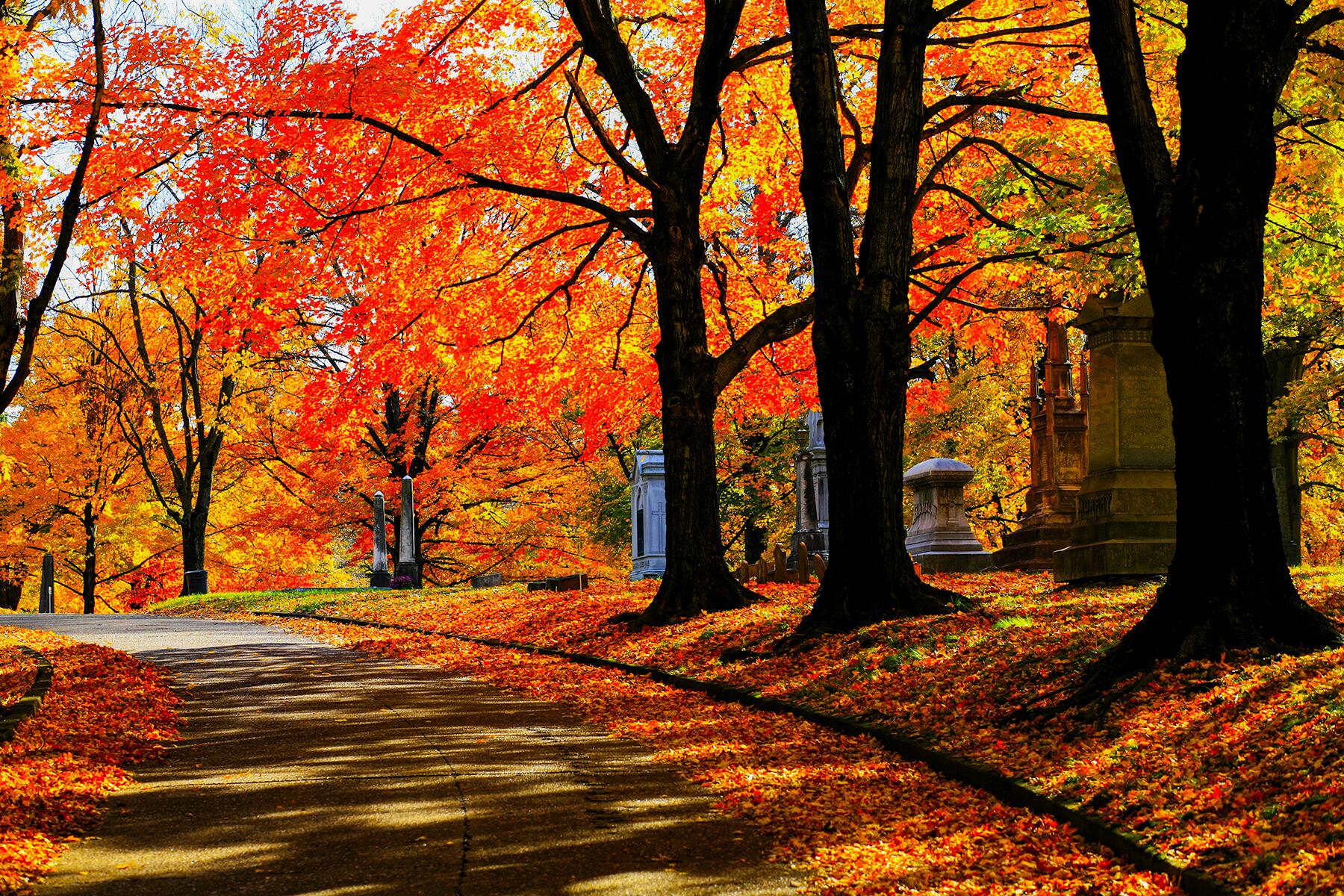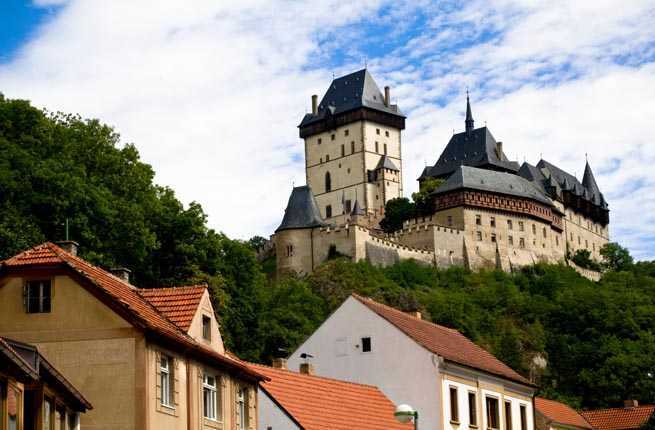
Once upon a time, on windy moors or in sublime gardens, knights and damsels went for strolls, well-dressed aristocrats danced in grand ballrooms, and fierce battles were waged along the stone walls. Now this is the stuff of fairy tales, but the majestic castles that remain resplendent throughout Europe stand to remind us of how real these times once were. Visiting one of these castles transports you back to a time that was a bit more dreamy than today—and that’s why we love them. From stark, foreboding fortresses to operatically opulent palaces, these 25 castles are the cream of the crop.
By Maggie Gorman

Karlstejn Castle, Prague, Czech Republic
This stunning hilltop castle that overlooks Prague was once Charles">. Now it’s home to the Chapel of the Holy Cross, which once held and guarded the crown jewels and is flanked by 129 painted wood panels and an arched canopy with semi-precious stones. After long sieges during the Hussite Wars of 1420, interest in the castle waned—until renovations at the end of the 19th century restored the monument.
Insider Tip: Opt for the 75-minute over the 55-minute tour; it includes the Chapel of the Holy Cross. Or, forgo the pricey tours altogether and opt for the free exterior courtyards.

Château de Castelnaud, Dordogne, France
The architecture of Château de Castelnaud has evolved from the 13th to the 17th century, making for a majestic finished product that stands on a rocky spur above the confluence of several valleys above the Dordogne. It was almost destroyed by arson in 1851, but Paris Opéra tenor Jean Mouliérat purchased and restored it in medieval style. Regal collections are now assembled on the first floor of the east wing, and a small village surrounds the castle on the slope of its hill. Castelnaud presides on top, clearly visible with its walls of red stone.
Insider Tip: Bring your kids along—they’ll love the reconstructions of medieval weaponry around the grounds.

Château de Beynac, Dorodgne, France
One of the best-preserved and most well known castles in its region, Château"> perches atop a rugged limestone cliff etched by the elements and history, overlooking the town and the north bank of the Dordogne">. Unassailable from its plateau perch, the 13th-century castle is also protected by a double moat, double crenellated walls, and double barbican. Frescoes and sumptuous tapestries drape the inner walls of this fortress, whose foreboding, romantic appearance has made it the perfect backdrop for several feature films.
Insider Tip: Consider camping below the château, beside the Dordogne—the picturesque view, which shifts with the light throughout the day, makes it worthwhile.

Eilean Donan Castle, Scotland
This romantic 14th-century Scottish castle is straight from a dark fairytale, and is certainly the most picturesque of all Scottish castles. Nestled on an islet connected to the mainland by a stone-arched bridge, it guards lochs Long, Alsh, and Duich with muscular stone walls, timber ceilings, and twisting stairs. Not until the early 20th century was the castle restored to its original splendor, which was ruined after the Spanish-Jacobite landing of 1719.
Insider Tip: Climb the hill overlooking the castle and you’ll be rewarded with a very photographable view of Eilean Donan Castle with the lovely Isle of Skye in the background.
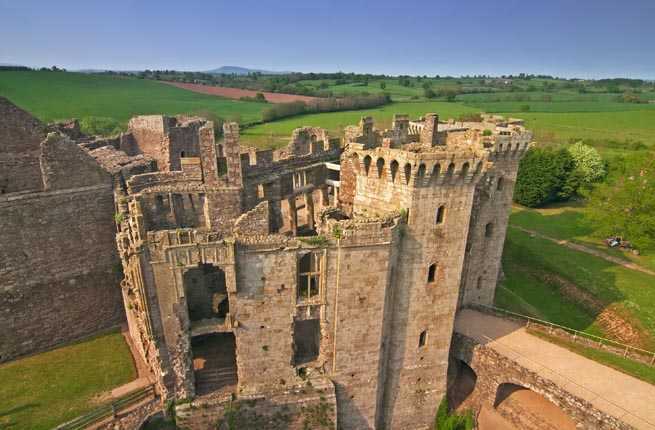
Raglan Castle, Wales
Insider Tip: Right next door you’ll find Tudor Farm House, which is stunning in its own right and also houses the Castle Café (don’t miss the Leek and Potato soup!).
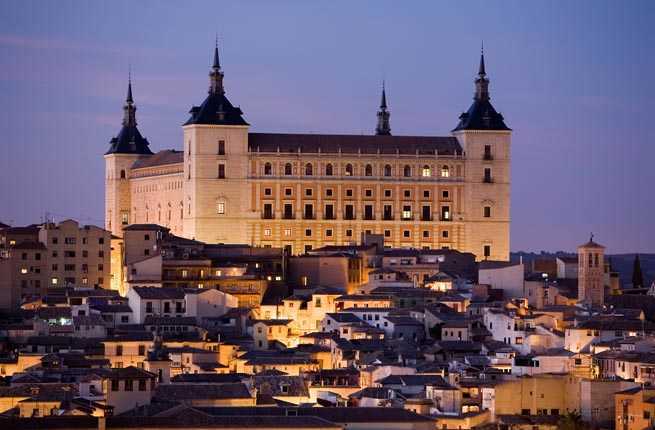
Alcázar of Toledo, Spain
This commanding stone fortress dominates Toledo, Spain from the city’s highest point, its four corner spires jabbing regally to the sky. Once a Roman palace in the 3rd century, the Alcázar was restored by Spain in the 1540s, and now contains a sizeable display of war memorabilia, including a sword collection—fitting for the castle’s bloody history, which culminated in an almost totally devastating 1936 attack. Now, its geometric, sandy walls house elegant arched ramparts and a keyhole city gate that opens into a long, zigzagging open-air hall.
Insider Tip: Make sure to keep your ticket to the Alcázar’s Museo del Ejercito (Military Museum); it’s needed when you exit the museum.
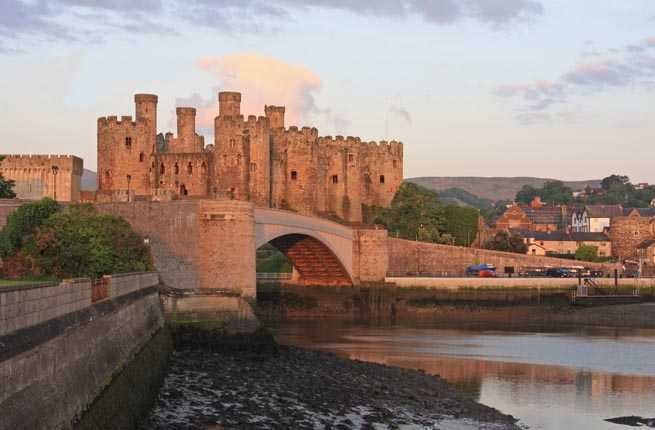
Conwy Castle, Wales
Power and domination are the keywords for this Welsh stronghold, built under Edward I. Eight large round turrets and a tall curtain wall jut up from Conwy">‘s rocky promontory, making for sweeping views of the surrounding area and town. The castle is patchy—the roof is missing, as are some sections of floor—but smart signage lets visitors envision how the Great Hall once looked.
Insider Tip: Traverse the dramatic suspension bridge to reach the castle—it was designed with turrets to blend in with the fortress.
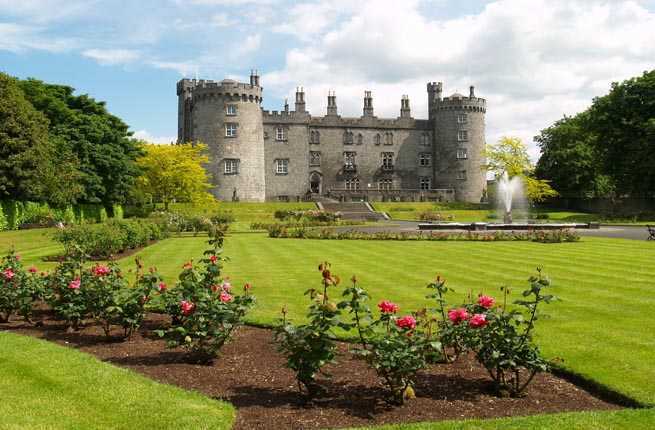
Kilkenny Castle, Ireland
Ireland’s most iconic castle is an enchanted blend of Gothic and Victorian styles nestled amidst 50 acres of rolling lawns beside the River Nore. Built in 1172, it seems as though knights and damsels should still roam its romantic grounds. The Butlers, a powerful Irish clan, called Kilkenny"> their home from 1391 until 1820, when William Robert turned the castle into a Victorian Feudal Revival wonderland. The castle’s Long Gallery contains family portraits, tapestries, and a resplendent decorated ceiling with oak beams carved with Celtic lacework and animal heads.
Insider Tip: Check out the Butler Gallery—formerly servants’ quarters—for a superb collection of Irish modern art.
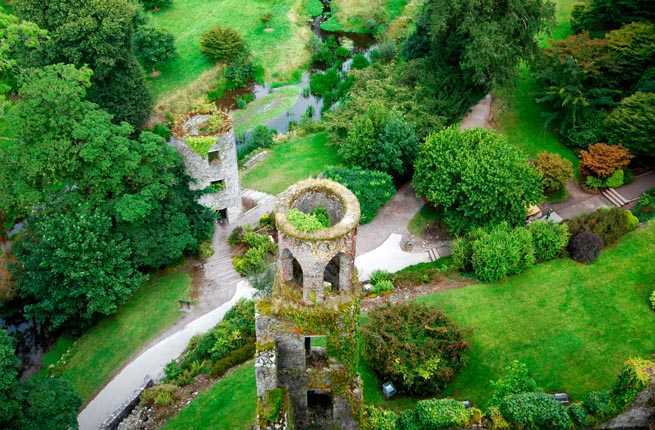
Blarney Castle, Cork, Ireland
Insider Tip: Lines to kiss the Blarney Stone are long mid-June through early September—go in early March for a shorter wait, plus a lovely display of naturalized daffodils.

Nymphenburg Palace, Munich, Germany
This stunning baroque and rococo palace is the largest of its kind in Germany, and represents a glorious high point of Italian cultural influence. Nymphenburg‘s magnificent two-floor Great Hall is adorned with stucco and grandiose frescoes, and is surrounded by the Gallery of Beauties, whose walls are covered with portraits of Ludwig I’s mistresses. Outside, a formal French style park extends to the woods with low hedges and gravel walks studded by ancient tree stands and three pavilions, including Europe’s first post-Roman heated pool.
Insider Tip: Don’t leave without visiting the former royal stables (the Marstallmuseum), which houses a fleet of fantastical vehicles and world-renowned Nymphenburg porcelain.

Schonbrunn Palace, Vienna, Austria
Insider Tip: Bus trips to the castle offered by the city cost several times more than taking the subway; however, they will get you there with a bit less effort.
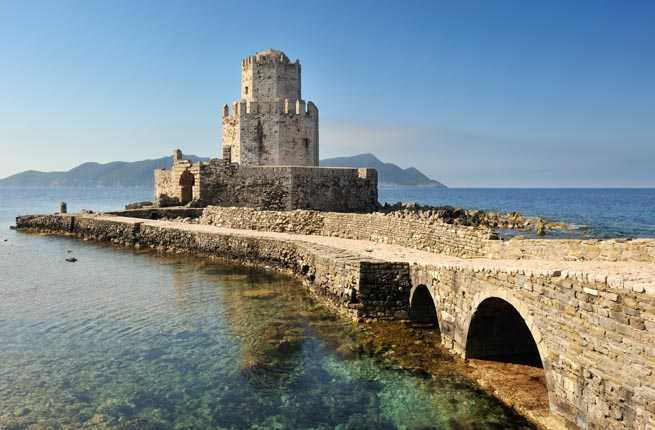
Methoni Castle, Greece
The Grecian village of Methoni is so lovely, it’s one of the seven towns Agamemnon offered Achilles when his beloved Briseis was carried off. Today its main attraction, the kastro, is the stuff of legends: the imposing 13th-century citadel juts into the sea on a stone bridge leading to Methoni’s haunting islands. Inside, coats of arms cover the walls—including the Venitian lions of St. Mark, representing their 1209 takeover of Methoni.
Insider Tip: The savage, stoic fortress has a bloody past: the prominent, octagonal Bourtzi even served as a prison once. Local lore says the winter winds let you hear the screams of prisoners past.
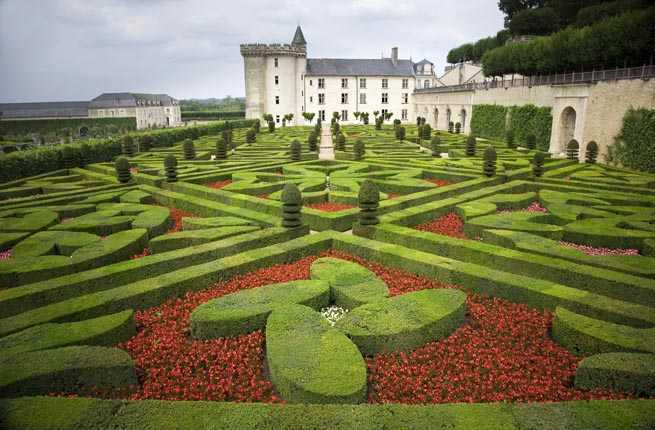
Château et jardins de Villandry, Loire, France
Insider Tip: Visit the first weekend in July for the Nuits des Mille Feux (nights of a Thousand Lights), when lanterns illuminate the gardens and a dance troupe performs, making for unparalleled photo ops.
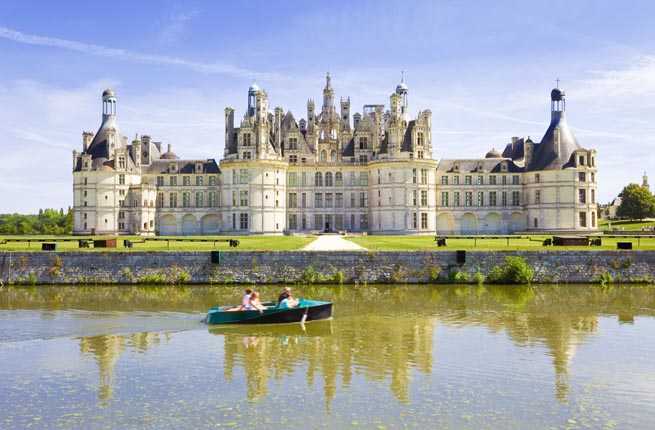
Château de Chambord, France
Insider Tip: Instead of the expensive tourist restaurants nearby, bring a picnic to enjoy on the grounds or in the woodlands to save money and time while getting the full experience of the palace.
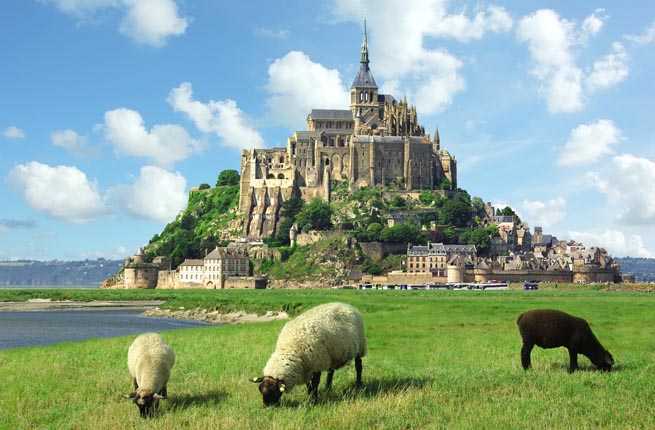
Mont St. Michel, Normandy, France
After the Eiffel Tower and the Louvre, this massive granite palace, began in 709, is France’s third most-visited sight. Mont"> rises some 400 feet above the seaside and is crowned with the "Marvel," or great monastery, that was built during the 13th century. With the causeway-connected mainland on the horizon, the Gothic-Romanesque abbey is thrashed by riotous surf 264 feet below. Guided tours explore the celebrated Lace Starcase and the exquisite Notre Dame sous Terre, among other spots, but make time to wander the labyrinthine vaulted rooms at your own leisure.
Insider Tip: The Archeoscope, which explores the myths of the Mont, is the one castle museum you should definitely make time for as an introduction to the area.
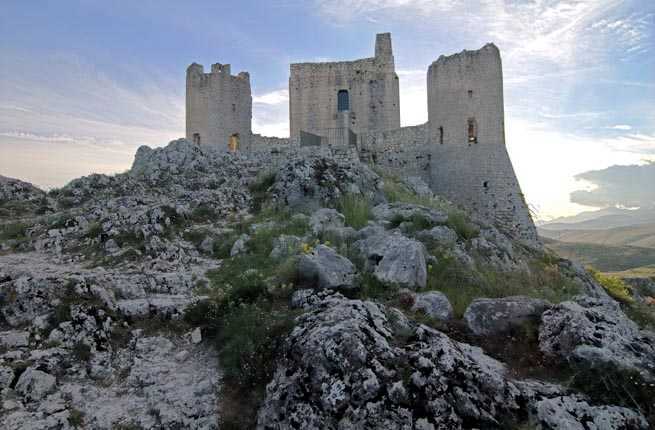
Rocca Calascio, Italy
This mountaintop fortress or rocca is the highest fortress in the Apennines. Its stark stone and masonry belies its exclusive purpose as a military accommodation. Beginning as a single watchtower in the tenth century, it soon acquired a walled courtyard flanked by four cylindrical corner towers and a taller inner tower. Battle never reached its stony walls, but a strong earthquake in 1461 caused considerable damage. The savage hills and punishing winds of this vertiginous fort reward those who aren’t faint-of-heart.
Insider Tip: If the panoramic views from the hill aren’t enough for you, drive onward to the high plain of Campo Imperatore, which is also in Gran Sasso e Monti della Laga National Park.

Rocca Della Guaita, San Marino, Italy
Also known as the "First Tower," Rocca della Guaita is the largest and oldest of the three fortresses that dominate the city of San Marino. The tower’s crudely martial stonework, which dates back to the eleventh century, made it an intimidating and effective guard for the first inhabitants of Monte Titano. The inner wall is the oldest, enclosing the Bell Tower, the Tower of the Pen, and the housings of the legions—which later transformed into prisons. The front yard contains a menacing array of artillery.
Insider Tip: A view of the entire city, the mountainous Romagnolo Apennines, and nearby castles such as Verucchio are all available from atop the Bell Tower.
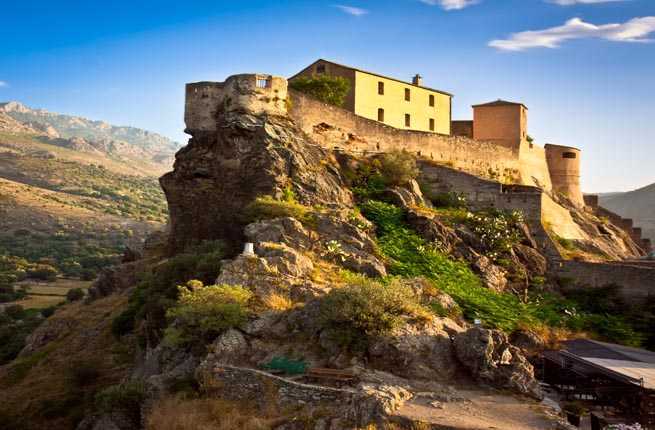
Corte Fortress, Corsica, France
Corisca’s citadelle towers precariously above Corte from a rocky promontory and also goes by "the Eagle’s Next." The faded pastel quarters of the old town rise in steps up to the ramparts of the fortress. Its highest point offers a panoramic vista of the city and its environs, including the confluence of three rivers; exhibition halls of historic photographs await inside, along with the Museum of Corsica, the Regional Contemporary Art Funds, the tourist center, and the scientific and technical cultural center of Corsica.
Insider Tip: The Corte Fortress is located in the center of Corsica’s capital Corte, which also happens to be a perfect base for hiking.
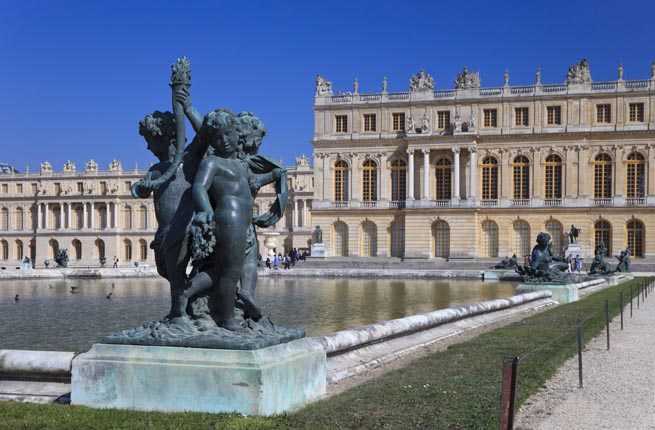
Palace of Versailles, France
When Louis XIV and his 20,000-strong following arrived in the 18th century, the gargantuan Château"> wasn’t even big enough. An entire new capital was promptly constructed to accommodate them, all in pompous, flamboyant baroque style. There’s the Hall of Mirrors where lavish balls once occurred, the manically decorative State Apartments, and the world’s most opulent bedroom, the Chambre de la Reine, where Marie-Antoinette once retired. It’s a sprawling, frothy fervor of ostrich feathers, floral textiles, frilly canopy beds, and gold-trimmed everything.
Insider Tip: Arriving around 9 am might just be the only way to avoid the stifling crowds that fill Versailles despite its size.
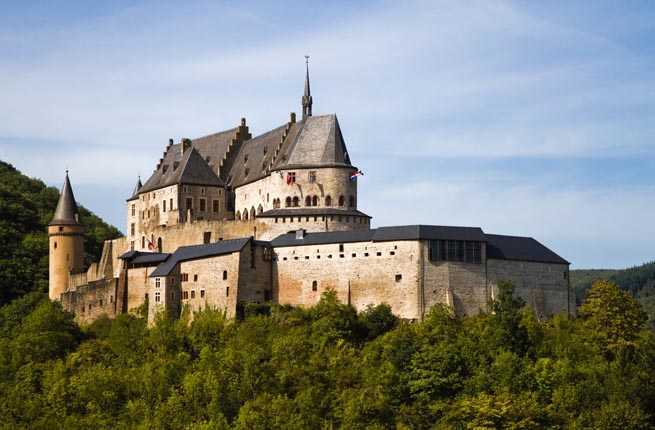
Vianden, Luxembourg
The tiny village of Vianden already feels straight out of medieval times, but not until you glimpse Vianden"> rearing up on a hill overlooking the town are you swept away. Built in the 9th century, its conical spires, crenellation, steep gables, and massive bulwarks lend the feudal lords’ perch an ominous feel. At the hill’s base by the banks of the river Our, a chairlift carries visitors up for remarkable views of the valley.
Insider Tip: A woodland path leads from the upper station to the castle below, for those looking for a challenge.

Neuschwanstein Castle, Bavaria, Germany
Like many Bavarian things, King Ludwig II’s ornate castle looks torn from an illustrated fairytale. Its regal white towers and bombastic, Middle Ages-inspired décor contrast with the fundamental shyness that compelled Ludwig to construct his elaborate private retreat in the first place. Ironically, 1.4 million people yearly now descend upon the castle, with its romantic, melodramatic flair inspired by the epic operas of Richard Wagner (and which in turn inspired Walt Disney’s Magic Kingdom).
Insider Tip: Along with legends, look out for the castle’s motif of swans—they were the heraldic animal of the Counts of Schwangau, whose successor the king considered himself to be.

Castel Sant’Angelo, Rome, Italy
This circular medieval castle stands between the Tiber and the Vatican and has long been one of Rome’s most emblematic landmarks. Started in AD 135, Castel"> went from a marble cylinder topped by cypress trees, to a fortress with a small chapel on top. Through the original Roman door of Hadrian’s tomb, you enter and pass through an enclosed courtyard to a sinister vaulted brick corridor. Make your way to the Sala Paolina, decorated with lavish biblical frescoes.
Insider Tip: The Notti Animate di Castel Sant’Angelo ("Animated Nights") are on hiatus, but they traditionally occur in July and August. They feature the castle as host of nightlife and entertainment into the wee hours.
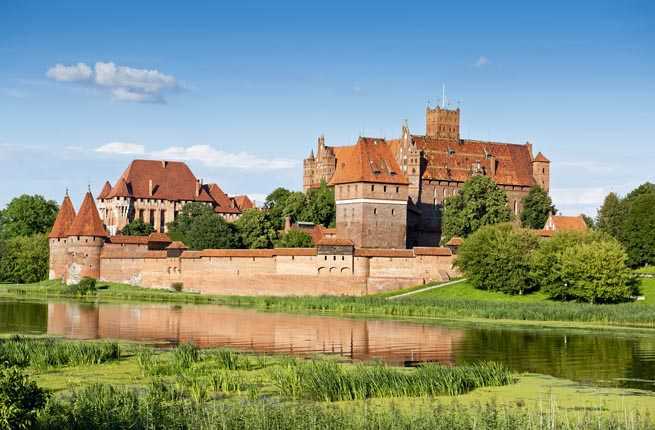
Malbork Castle, Poland
Malbork Castle is the largest castle in the world by surface area, and the largest brick building in Europe. It’s a classic example of a Gothic medieval fortress, built to strengthen the monastic Teutonic Order’s control of Old Prussia in 1406. Until 1772, Malbork served as a residence of the Polish kings. It was restored after World War II to its former splendor as an icon of the sanctity and violence of late Middle Ages Christianity. Situated on the Nogat River, it’s a bold testament to the monastic state, unrivaled by other Gothic architecture.
Insider Tip: The castle makes a great day trip from Gdansk—trains to Malbork run every hour.
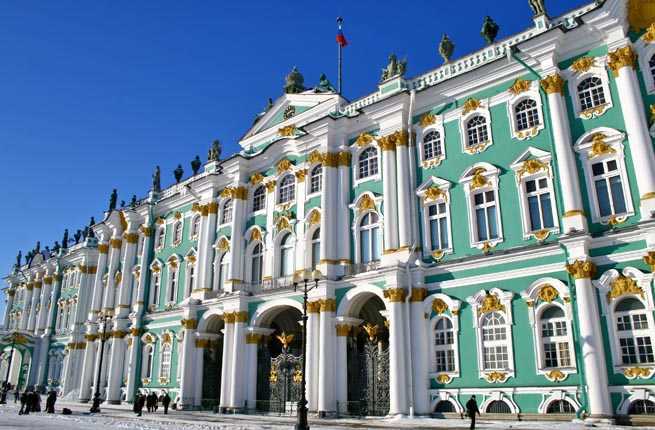
Winter Palace, St. Petersburg, Russia
Although only a few rooms are open to visitors, the Winter"> is worth seeing—with 1,001 rooms of malachite, jasper, agate, and gilded mirrors, it’s easy to imagine this Russian rococo monument housing Russia’s rulers. The Great Throne Room glows in rich marble and bronze, while the aptly named Malachite Room dazzles with green columns and pilasters. Outside are rows of columns and 2,000 ornate windows on an aqua and gold backdrop, all capped by a roof balustrade of statues and vases.
Insider Tip: Since it’s a part of the State Hermitage Museum, make sure to take in the incredible art collection, as well.

Highclere Castle/Downton Abbey, England
This imperial manse in the South of England is certainly better known as "Downton Abbey," Masterpiece Classic’s juggernaut period drama that uses Highclere"> as its namesake’s on-screen stand-in. You won’t find Lord and Lady Grantham there, but you will find manicured gardens, commanding pinnacles that echo London’s Parliament, spectacular state rooms, a massive library, and sumptuous furniture that belongs to the owners.
Insider Tip: Visit on late spring or summer weekends, when Highclere is most likely to be open—opening times are limited and unpredictable, so be sure to check ahead of time.
